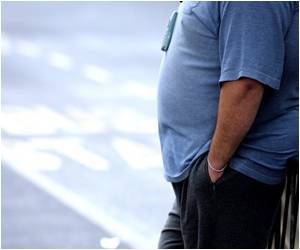A new study conducted by scientists finds obesity has declined among US teenagers from rich families but has risen among their impoverished counterparts.

"We find that although the overall obesity prevalence has plateaued, the trend looks very different across different subgroups," said the study in the Proceedings of the National Academy of Sciences.
Using family income as well as the education level of the parents to analyze two major US surveys, researchers found a growing class gap where obesity was concerned.
Beginning in the mid-2000s, obesity rates declined among children of parents who graduated from college.
Meanwhile, obesity rates rose among children of parents who had only a high school diploma.
Similar trends were seen when researchers separated the data by income level.
Advertisement
The obesity rate among those aged 12-17 in the United States nearly doubled from the late 1980s until the mid-2000s, but began leveling off about a decade ago.
Advertisement
There has been no change in the teen obesity rate since then.
In the United States, obesity in adolescents and children is based on growth charts issued by the Centers for Disease Control and Prevention.
A body mass index, or ratio of weight and height, above the 95th percentile for age and gender is considered obese. Between the 85th and 94th percentile is considered overweight.
Key reasons the poor may be gaining weight are lack of physical activity and excessive food intake, the study said.
According to the study, calorie intake among kids of all income classes has gone down in recent years, but only kids of educated parents have reported getting regular exercise.
"The difference comes down to physical activity," study co-author Kaisa Snellman told AFP.
"Educated families, they are much more likely to engage in physical activities, exercising, biking around, walking."
Access to healthy foods also remains an obstacle for the poor.
The US Department of Agriculture has reported that 9.7 percent of the US population, or 29.7 million people, live in low-income areas more than a mile from a supermarket.
In those areas, "the only options for grocery shopping are 'convenience' stores, liquor stores, gas stations, or fast food restaurants that sell foods high in fat, sugar, and salt," said the study.
Obesity in young people can cause a host of health concerns, including higher risk of type 2 diabetes, obstructive sleep apnea, high blood pressure and psychological problems, experts said.
The study was based on two nationally representative federal health surveys, the 1988?2010 National Health and Nutrition Examination Survey and the 2003?2011 National Survey of Children's Health.
Source-AFP















